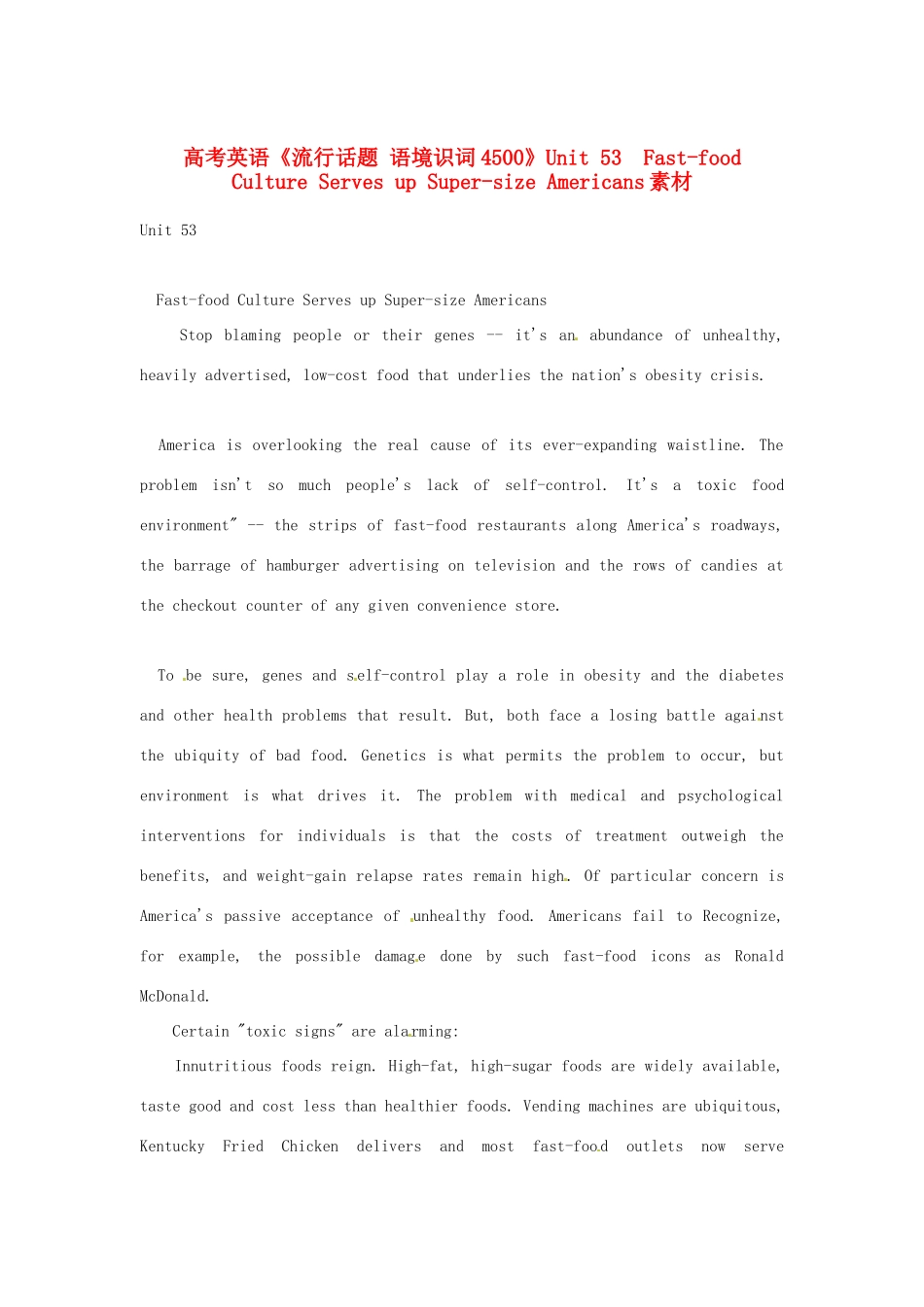高考英语《流行话题 语境识词 4500》Unit 53 Fast-food Culture Serves up Super-size Americans 素材Unit 53 Fast-food Culture Serves up Super-size Americans Stop blaming people or their genes -- it's an abundance of unhealthy, heavily advertised, low-cost food that underlies the nation's obesity crisis. America is overlooking the real cause of its ever-expanding waistline. The problem isn't so much people's lack of self-control. It's a toxic food environment" -- the strips of fast-food restaurants along America's roadways, the barrage of hamburger advertising on television and the rows of candies at the checkout counter of any given convenience store. To be sure, genes and self-control play a role in obesity and the diabetes and other health problems that result. But, both face a losing battle agai nst the ubiquity of bad food. Genetics is what permits the problem to occur, but environment is what drives it. The problem with medical and psychological interventions for individuals is that the costs of treatment outweigh the benefits, and weight-gain relapse rates remain high . Of particular concern is America's passive acceptance of unhealthy food. Americans fail to Recognize, for example, the possible damag e done by such fast-food icons as Ronald McDonald. Certain "toxic signs" are alarming: Innutritious foods reign. High-fat, high-sugar foods are widely available, taste good and cost less than healthier foods. Vending machines are ubiquitous, Kentucky Fried Chicken delivers and most fast-foo d outlets now serve breakfast. The food industry has run amok. Advertisements for prepac kaged and fast foods saturate the airwaves, newspapers and magazines. Physical activity has declined. Most Americans get less exercise than ever -- walking less and driving more. As further evidence that environment is to blame, obesity has risen notably in other countries, including China, and that migrants to Western countries have much higher obesity rates than their relatives back home. Particularly vulnerable to the problem are American children. Parents can't win this battle alone. But they might stand a chance through the following proposed policy changes: Make activity more accessible, by, for example, building communities to allow more walking or biking. Regulate TV food ads aimed at children and mandate equal time for p ro-nutrition messages. Ban fast foods and soft drinks from schools, instead forging school contracts with sports-related companies. Subsidize healthy foods and drive down process of fruits and vegetables by 70 percent. Such measures would take the blame off people with obesity and are the only real path to doing something constructive about this problem.

